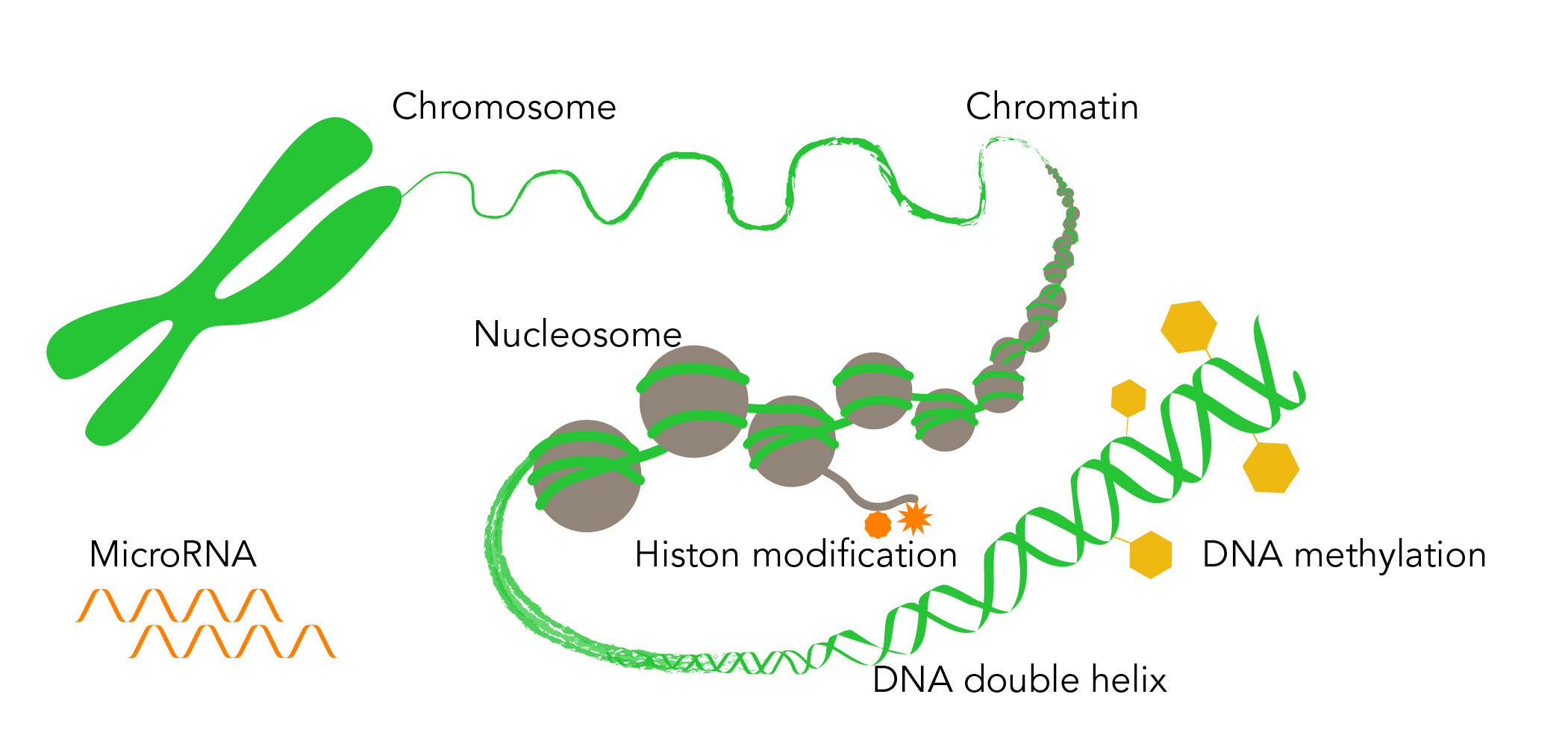Epigenetics – it’s not all in the genes
Your health is largely thanks to your genes, which are passed on to your children. So far, so good. However, for a few years now, epidemiological studies have been indicating that this is not quite the whole story.
We’ve known for a long time that an unhealthy lifestyle with a poor diet, stress and too little exercise can make you ill. The latest research now shows that the negative effects of an unhealthy lifestyle can also be passed on to your offspring, which is a scientific revelation. It was previously assumed that this was simply impossible because such additionally acquired information is not encoded in our genes.
Scientists attribute this phenomenon to the epigenetic modification of our genetic material (genome). These are chemical patterns on the DNA that control to what extent a gene is switched on and off. For example, such chemical patterns can arise due to a poor diet of the parents, resulting in the children of these parents having an increased risk of diabetes despite eating healthily themselves.

Environmental factors and aging
Identical twins have absolutely identical genetic material and that’s why they look the same when they are children. The older they get, the more they differ. This is because different environmental factors influence their appearance via epigenetic regulation.
In a pregnant woman, environmental stresses (e.g. smoking) can actually affect three generations: the mother, the unborn child and in a female foetus the egg cells which are already present.
Molecular mechanisms of epigenetics
Our DNA is composed of 3.2 billion base pairs and is grouped into 23 chromosome pairs per cell. Researchers were amazed to discover that our 23,000 protein-coding genes make up just 2% of our DNA. The remainder used to be described as “junk DNA”, but we now know that these noncoding DNA sequences also have important functions. For example, they help the genome to adjust to environmental factors.
Epigenetic modification fulfils similar tasks. To date, three key mechanisms have been identified:
- DNA methylation (addition of methyl groups to DNA)
- Histone modification (chemical modifications of histones, which the DNA helix wraps around)
- The production of microRNA (short nucleotid chains that function in regulation of gene Expression)

These three mechanisms enable genes to be switched on or off in response to environmental factors such as diet, sport, stress or air pollution. These epigenetic modifications to the DNA can be transmitted to the daughter cells. When environmental factors change again over a long period of time, these epigenetic modifications can also be reserved.
Epigenetics and cosmetics
As a biochemist at Mibelle, I’m of course interested in the connection between epigenetics and skin aging. Unfortunately there are currently very few studies in this area. It is clear, however, that chronic exposure to air pollution, UV light and other external stress factors leads to permanent aging of the skin. Even if the stress factors are eliminated, the skin cells have been epigenetically modified and will continue to age.
In our research, we’re now searching for active ingredients that will normalise the negative chemical tags and counteract the skin aging process. We found an interesting analogy in the development of queen bees. Queen bees are much bigger and live much longer than the genetically identical worker bees. The longevity of queen bees is due to the epigenetic tags on their DNA. These tags are triggered by a special diet during the larvae stage. The queen larvae are exclusively fed royal jelly while the other larvae are fed with pollen. By analysing the ingredients in the royal jelly, we were able to create a new peptide ingredient that has positive effect on skin regeneration.
As part of our continuing research in this area, we are investigating how epigenetic changes in the skin function with regard aging and environmental stresses. With this knowledge, we then hope to devise a way to protect the skin against these negative effects and reduce already existing reprogramming.









